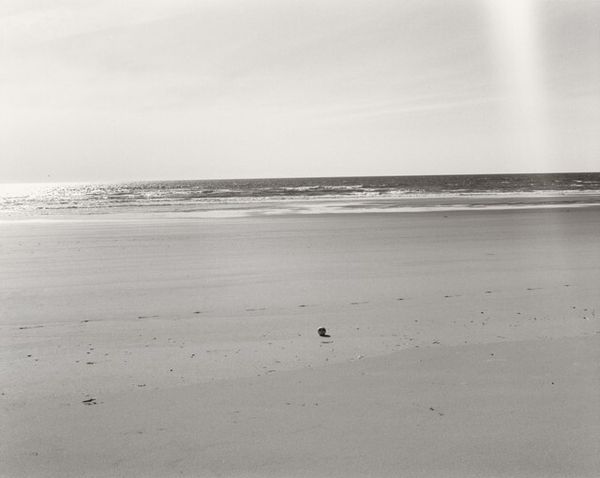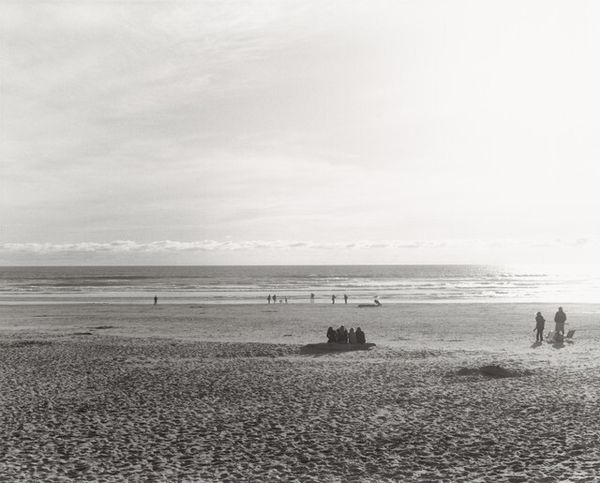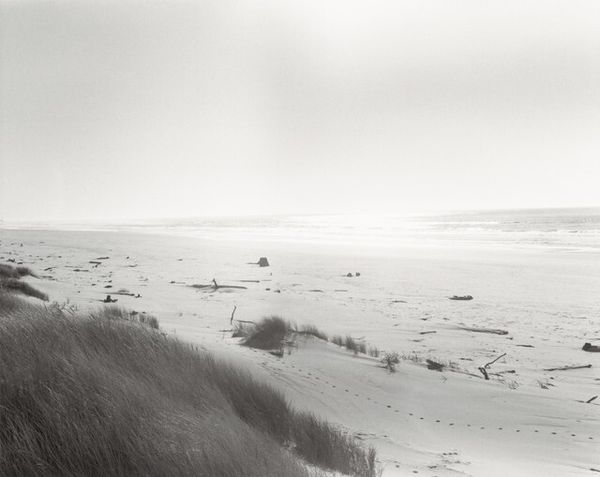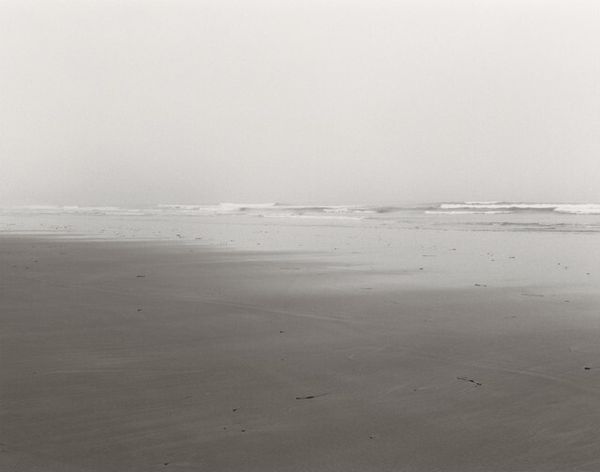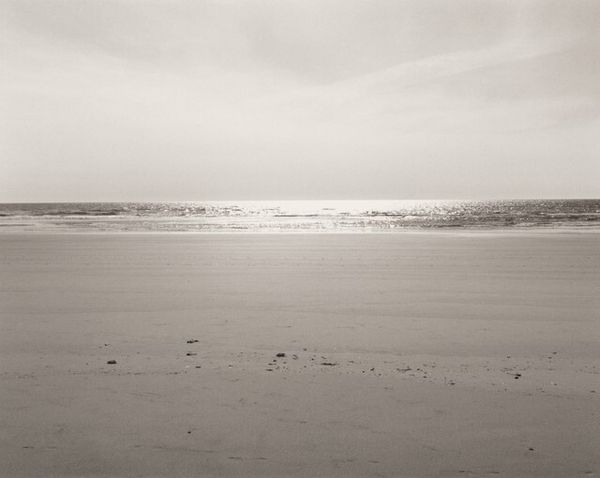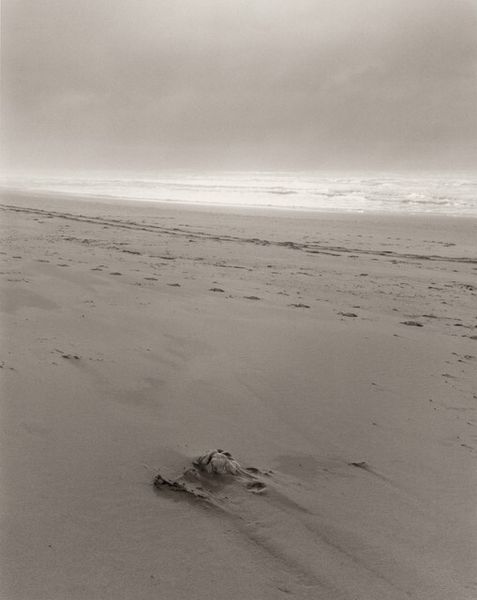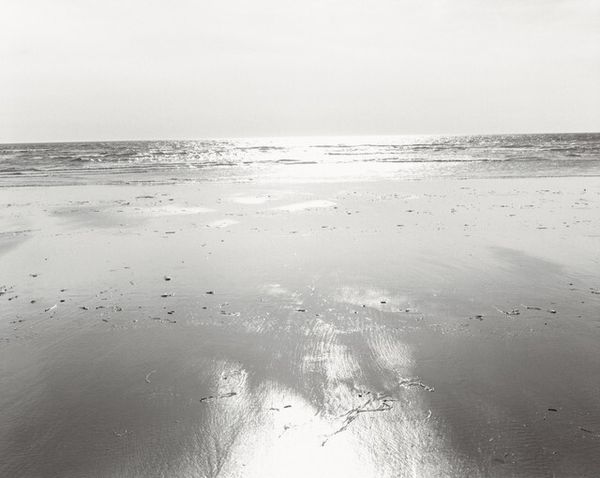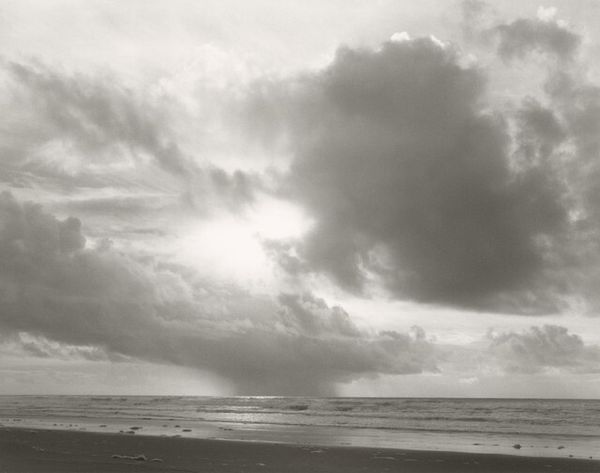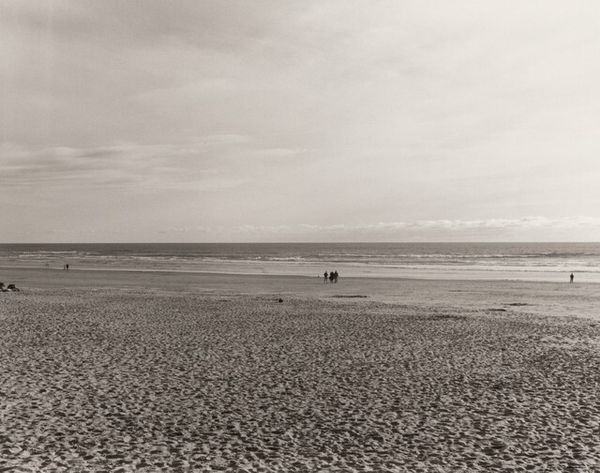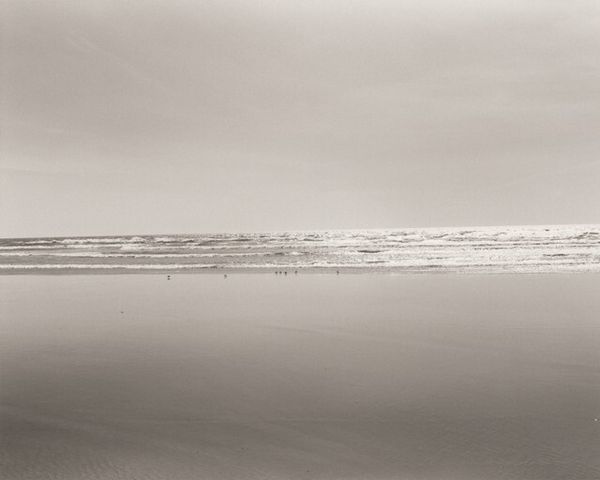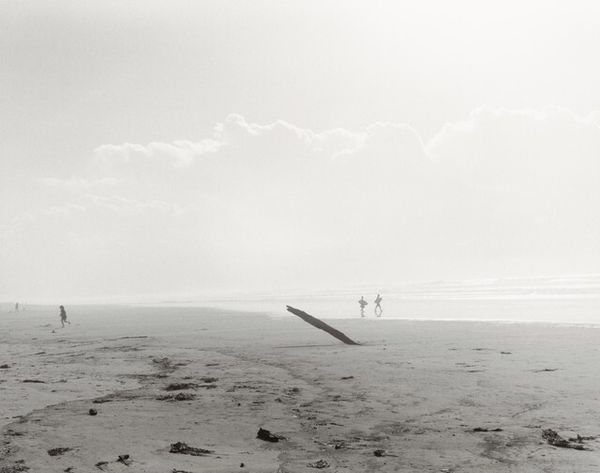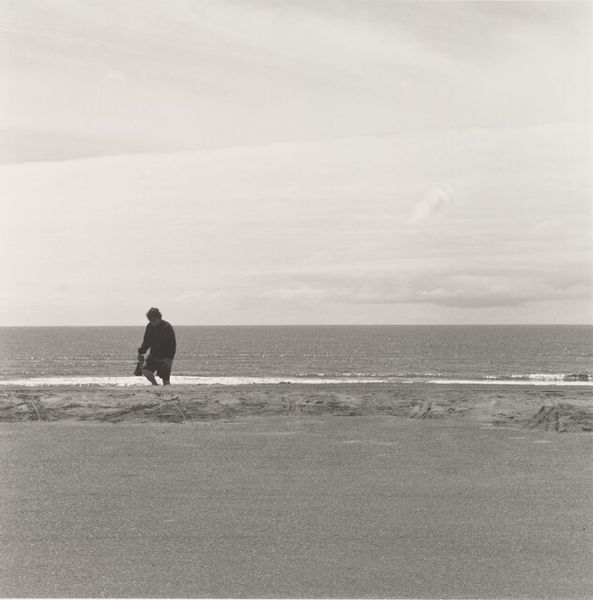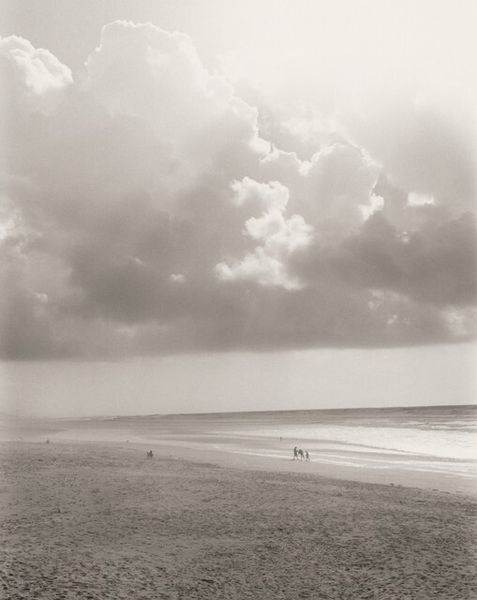
photography, gelatin-silver-print
#
contemporary
#
landscape
#
outdoor photo
#
sport photography
#
outdoor photography
#
photography
#
sky photography
#
gelatin-silver-print
#
monochrome photography
#
realism
Dimensions: image: 17.5 × 17.5 cm (6 7/8 × 6 7/8 in.) sheet: 35.4 × 27.7 cm (13 15/16 × 10 7/8 in.)
Copyright: National Gallery of Art: CC0 1.0
Curator: We're looking at "Clatsop Beach, Oregon," a gelatin-silver print by Robert Adams, created in 1999. Adams' work often explores the relationship between humanity and the American West. Editor: My initial impression is quiet solitude, or maybe isolation. The vast expanse of the beach and ocean dwarfs the figures; even the grayscale tones feel…removed. What are the material components contributing to this sensation? Curator: Well, consider that Adams' documentation frequently underscores environmental impact and suburban sprawl. This scene is set against the backdrop of that. In the latter 20th century, we see these spaces—previously emblems of raw, untouched nature—gradually being redefined, not necessarily destroyed, but certainly reshaped by tourism and changing perceptions of leisure. Editor: Yes, look at how the tones impact our sense of space here: it isn’t crisp detail but this tonal range—the granular quality of the print seems significant. The lack of sharp contrasts flattens everything and perhaps speaks to that sense of humanity and nature occupying the same plane... Curator: Adams deliberately positions the viewer at a remove. He is neither celebrating nor decrying. It’s observational, highlighting the changing social and spatial dynamics in these landscapes. Consider that beach photography from the earlier 20th century, with large groups gathered at the water. It is absent here, a quieter beach experience with solitary activities, and a change in public behaviors is being captured. Editor: And the material processes contribute. It is about selection; and silver gelatin prints—these have a specific chemical signature in response to light, and the tonality emphasizes texture; beach, wave, the clothes the people wear: these invoke the feeling of being in the moment. It also reflects on photography itself: what are we seeing versus how are we experiencing what’s presented before us? Curator: The subtle grays invite contemplation. It demands a slower kind of looking, aligning with Adams’ broader commentary on how we engage with these environments now, beyond simply capturing them as picture postcards. Editor: Exactly. It’s not just a scene. The act of making and selecting monochrome film seems intrinsically connected to that feeling of contemplation, slowing us, while simultaneously raising questions about our consumption of these landscapes. Thank you. Curator: Agreed; seeing it in the context of Adams' wider project provides a crucial historical viewpoint to appreciate it.
Comments
No comments
Be the first to comment and join the conversation on the ultimate creative platform.
